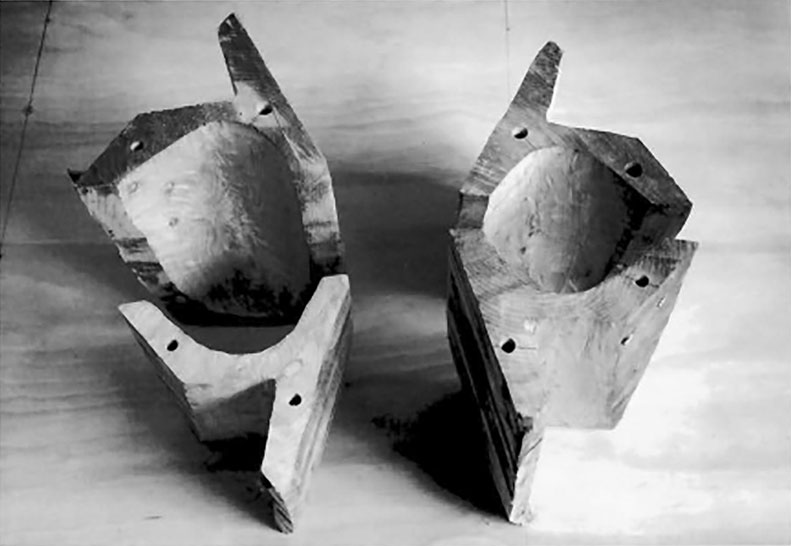
The Second Element
Traditionally, sculpture enters space; it rises up into it or stretches out, through it and across. Bill Scott’s recent work in wood places sculpture in air, in the midst of the second element.
When a tree is cut down, that is to say when it is turned down from being in the air to lying on the earth, the water, which has always been present in the wood, suddenly becomes a problem; as the wood dries out it can crack and break, uncontrollably. The tree, or the large block of wood cue from the tree, must be split open in order to allow it to dry out, to allow the air to get in at the wood. Scott exploits the necessity of this in his work for both its technical and sculptural imperatives.
In recent years the artist has preferred to use newly felled timber, which is, of course, especially liable to cracking. He selects a section of the tree, cuts it in half and takes the heartwood out of it quickly with a chain saw. The air circulates and the wood is able to stabilise. As the wood is allowed to breathe, so it is allowed to stand. The two are intimately related; inspiration is recognised as independence. The work’s life in the air has to do with its presence before us.
To ensure the stability of the wood, to sustain it in its natural element, … read more…